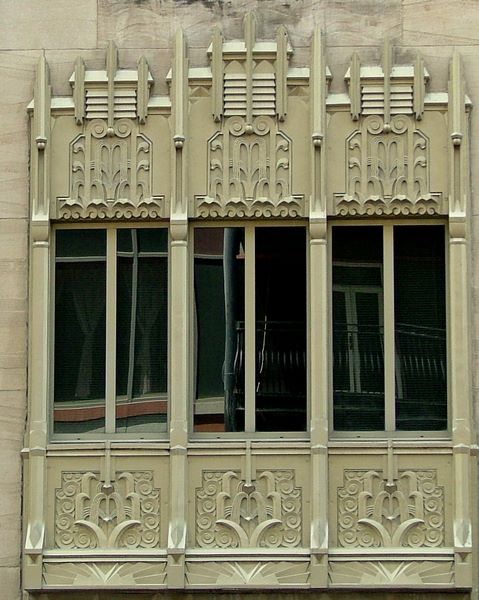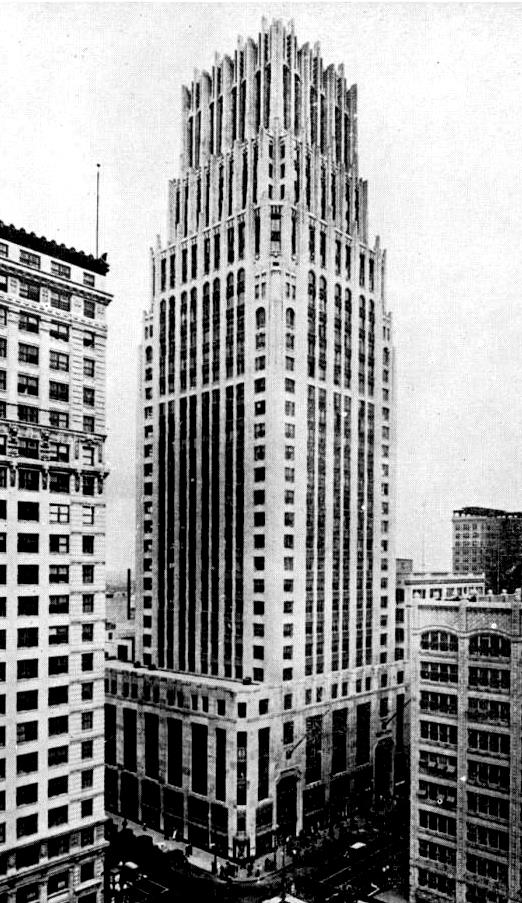|
Throughout the 1920s, Jesse Jones and Ross Sterling, founder of Humble Oil, competed for influence in Houston. Jones owned the National Bank of Commerce. Sterling owned Houston National Bank. Jones published the Houston Chronicle. Sterling published the Houston Post-Dispatch. Jesse Jones had connections, both political and financial. Ross Sterling had money (oil money, that is). At the beginning of the 20th century, like in other cities, the men tried to prove their dominance through the height of their buildings.
The Gulf Building was planned to be the flagship of Jones’s real estate empire. Jones insisted that the building was to be the tallest west of the Mississippi and ‘be of strikingly modern design.’ Jones’s plan was executed. The Gulf Building was the tallest building west of the Mississippi for two years. From the time of its erection in 1929 until 1963, the steel-frame, Art Deco tower was the tallest structure in Houston. Housed in the building were Jones’s National Bank of Commerce, the Gulf Oil Companies and the Sakowitz Brothers Department Store.
Jones’s good fortune continued through the Depression. He managed to take control of Sterling’s Houston National Bank (Sterling was bankrupt) and, during Franklin D. Roosevelt’s administration, he was appointed as both Chairman of the fund-dispersing Reconstruction Finance Corporation and Secretary of Commerce.
The Gulf Building was designed by Alfred C. Finn, Kenneth Franzheim and J.E.R. Carpenter. Like many Art Deco buildings derived from Gothic detail, it had been inspired by Eliel Saarinen’s second-prize entry to the Chicago Tribune’s design competition of 1922. A stepped-back brick tower sits upon a six-story base sheathed in Indiana limestone. The building is ornamented with extensive interior and exterior Art Deco detailing, including scalloped molding, metal work and windows placed in vertical channels on the tower.
Atop the 37th floor was a viewing platform and the Jesse H. Jones Aeronautical Beacon. On a clear day, Galveston could be seen from the telescopes mounted on the deck. On the summit of the building was a rotating Gulf Oil Company sign. The observation deck, beacon and sign have since been removed.
The interior of the building is just as extravagant as the exterior. The vaulted lobby contains eight frescoes by Vincent Maragliotti depicting the history of Texas. In the cavernous banking hall, built for Jones’s National Bank of Commerce, there is a profusion of ornamental metal-work - just look up at the intricate ceiling. A stained glass window depicting the Battle of San Jacinto was added in 1960 to the Travis side of the hall. The hall, still used for banking, actually feels like walking into the 1930s.
An alcove off the banking hall holds rotating displays. Sometimes you might catch a display tracing the history of both the structure and Jesse H. Jones. The building is now owned by JPMorgan Chase, with the banking hall and lobby open to the public during normal business hours.
|


|